In today’s MacroBusiness podcast with Houses & Holes, I discuss three medium to long-term headwinds that are facing the Federal Budget, which are likely to lock the Government into deficits for years to come irrespective of who wins office in the upcoming election.
The first of these headwinds are the falling terms-of-trade, brought about by declining commodity prices.
As explained previously, Australia experienced the biggest commodity price boom in its history between 2003 and 2011, which saw the terms-of-trade hit all-time highs in mid-2011 (see next chart).
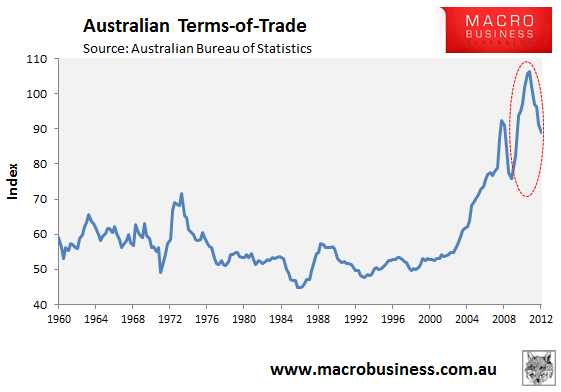
Since Australia received a large pay-rise for the goods that it exports to the rest of the world (e.g. iron ore, coal, gold and natural gas), this boom in commodity prices and the terms-of-trade created a unique situation whereby the growth in national disposable incomes (NDI) grew at a much faster pace than the growth in the overall economy, as measured by gross domestic product (GDP):
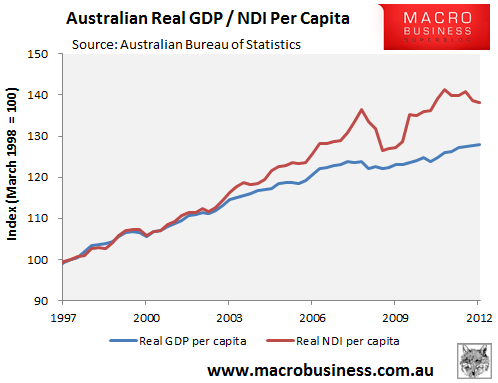
In fact, research released last year by the Australian Treasury showed that around half of the growth of average incomes experienced over the 2000s was caused by the one-off rise in the terms-of-trade (commodity prices):
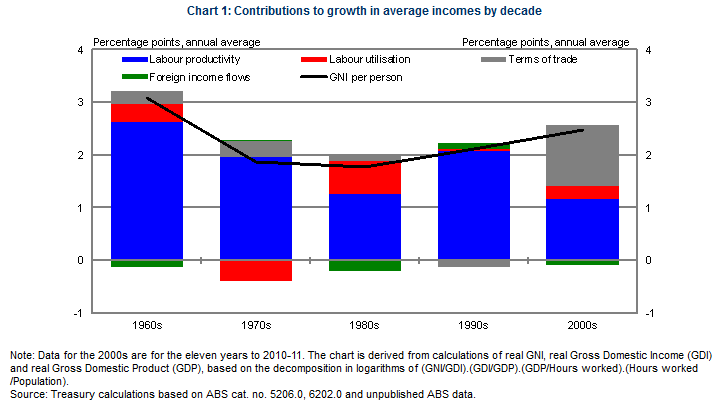
The Federal Budget was a direct beneficiary from the surge in commodity prices via rising personal and company taxes (think Rio and BHP), as well as via lower welfare expenditure brought about by the stronger economy.
The problem for the Federal Government going forward is that the terms-of-trade are now falling back towards longer-term averages, which is dragging heavily on income growth, with real per capital national disposable income falling by -0.5% over the December quarter and by -1.4% over the past year. Going forward, income growth will continue to be weak as long as the terms-of-trade continues to unwind. As a result, personal and company tax collections will be weak relative to past experience, whereas Budget outlays could increase to the extent that weaker employment leads to higher welfare payments.
The second related headwind is the upcoming peak and then decline in the mining investment boom, which saw mining capital expenditures (capex) surge from around 1% of GDP in 2003 to nearly 7% currently, with much of this growth coming over the past two years (see next chart).
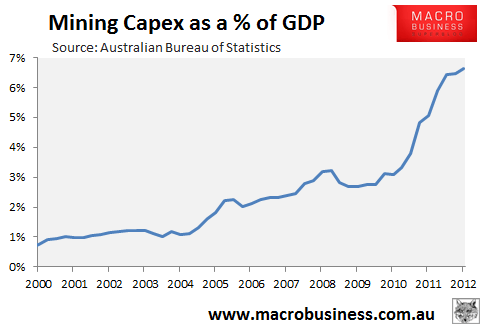
While debate remains around exactly when mining capex will peak and how steep the decline will be, the peak is nonetheless coming soon.
According to the Reserve Bank of Australia (RBA), mining-related activities employ nearly 10% of the Australian economy, with around half of these workers employed in activities related to capex, such as engineers, construction workers, and ancillary services. Therefore, as mining capex declines, it will detract from Australia’s GDP growth and employment, again placing pressure on the Federal Budget via lower personal and company tax receipts and higher welfare payments.
The final longer-term headwind relates to Australia’s ageing population.
As shown in the next chart, Australia’s dependency ratio – i.e. the ratio of the non-working population, both children (< 20 years old) and the elderly (> 65 years old), to the working aged population – is projected to rise over coming decades as the large baby boomer cohort enters retirement:
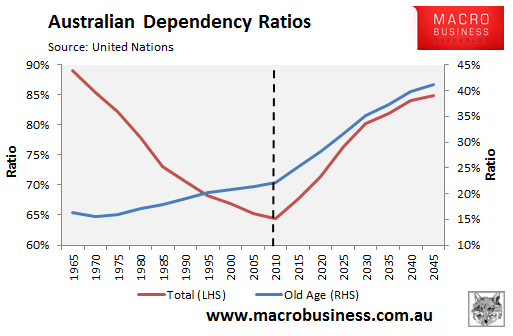
Accordingly, the number of workers per dependent is projected to fall:
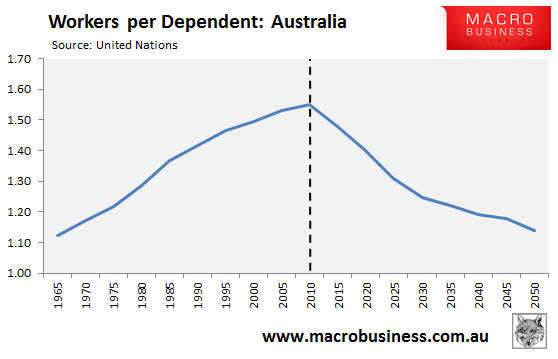
As is the ratio of employment-to-population:
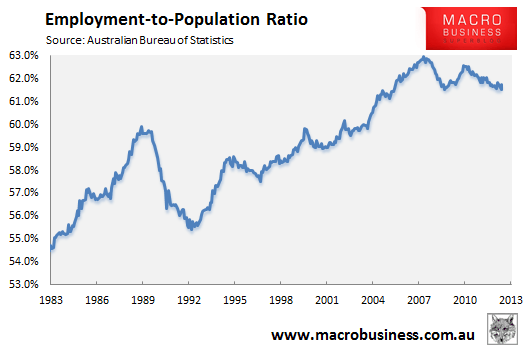
The implications for the Federal Budget are two-fold. First, the Government will have a much smaller pool of workers with whom to collect taxes from, making it much more difficult for the Government to raise the required amount of tax revenue. Second, the higher proportion of retirees and older aged Australians will increase the amount of health and aged-care expenditure, significantly increasing overall Budget outlays.
In short, without radical reforms to the way taxes are collected and fiscal expenditures, the above three headwinds will ensure that the Federal Budget remains in deficit for years to come, irrespective of which party is in office.

